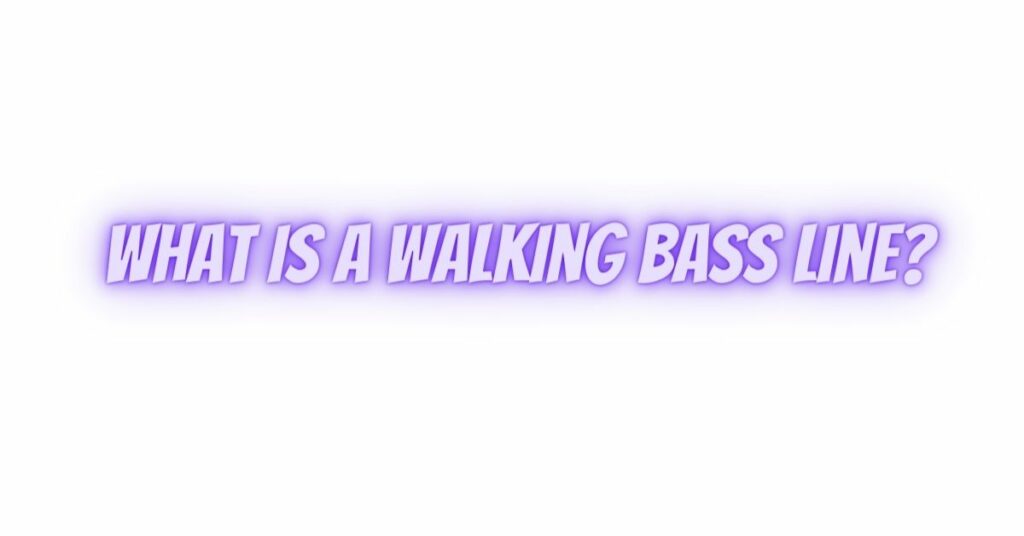The walking bass line is a foundational and distinctive element in music, particularly in jazz, blues, and related genres. It serves as the rhythmic and harmonic backbone of a composition, creating a sense of motion and groove. In this comprehensive article, we will delve into the concept of the walking bass line, its characteristics, and its vital role in music, particularly in jazz and its various subgenres.
Defining the Walking Bass Line
A walking bass line is a continuous sequence of notes played on a bass instrument (often an upright bass or electric bass guitar). It moves steadily and typically consists of quarter notes, ensuring that a note is played on each beat. The primary purpose of a walking bass line is to provide a strong sense of rhythm, outline the underlying chord progression, and establish a foundation for improvisation and melody.
Characteristics of a Walking Bass Line
- Steady Rhythm: Walking bass lines maintain a consistent, even rhythm, with each note typically lasting for a quarter note. This steady tempo provides a sense of forward motion.
- Harmonic Punctuation: Walking bass lines follow the chord changes of a song, emphasizing the root notes of the chords. The bassist will often add passing tones and chord tones to connect the chords smoothly.
- Variation and Movement: While walking bass lines adhere to a steady rhythm and follow chord progressions, they are not static. Bassists use scalar runs, arpeggios, and chromatic passing notes to add variation and interest.
- Support for Soloists: In jazz and other improvisational genres, walking bass lines provide a strong foundation for soloists. The bassist’s notes not only support the harmonic structure but also interact with the soloist’s lines.
- Call and Response: Walking bass lines can engage in a call-and-response dynamic with other instruments, especially with the drums. This interaction contributes to the song’s energy and flow.
Walking Bass Line in Jazz
The walking bass line is most closely associated with jazz music. In jazz, the walking bass is a crucial element that contributes to the swing and groove of the music. Some key aspects of walking bass lines in jazz include:
- 2-Feel and 4-Feel: Jazz bassists can approach walking bass lines with either a 2-feel or a 4-feel. A 2-feel emphasizes every other beat, creating a smoother and more relaxed groove. A 4-feel accents all four beats in the bar, producing a more driving rhythm.
- Use of Chord Tones: Jazz bassists often highlight chord tones (root, third, fifth, seventh) in their lines, enhancing the harmonic foundation of the music.
- Syncopation: Syncopated rhythms and anticipations are common in jazz walking bass lines. These rhythmic devices add depth and complexity to the groove.
Walking Bass in Other Genres
While the walking bass line is closely associated with jazz, it is not limited to this genre. It can also be found in:
- Blues: Walking bass lines in blues provide a steady groove, enhancing the bluesy feel of the music.
- Rock ‘n’ Roll: Early rock ‘n’ roll and rockabilly often feature walking bass lines that contribute to the energetic, danceable quality of the music.
- Country: In country and bluegrass, walking bass lines add a rhythmic foundation, allowing other instruments to weave melodies and harmonies.
Conclusion: The Heartbeat of the Rhythm
The walking bass line is a fundamental element of music that breathes life into compositions across various genres. Its steady rhythm, harmonic support, and improvisational flexibility make it a cornerstone of jazz and an important component of other musical styles. Whether it’s leading the way in a jazz ensemble or providing the backbone of a blues tune, the walking bass line is the heartbeat of the rhythm, driving the music forward with its unwavering and grooving presence.

